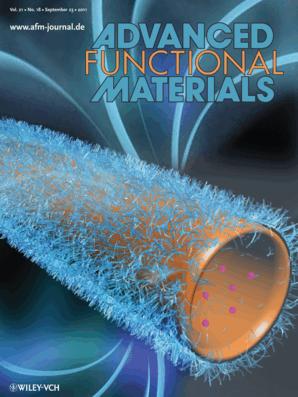It is estimated that approximately 40% or more of the new chemical entities generated through drug discovery programs are poorly soluble in water. Clinical application of these insoluble active ingredients always faces with significant problems. One typical drug is paclitaxel (PTX), which is a well-known anti-cancer agent that has provided effective treatment for a wide range of tumors, but also notorious for its poor water-solubility. PTX is currently formulated in a vehicle composed of a 1:1 blend of Cremophor® EL and ethanol (Taxol®), which will bring a large amount of solvent into the body and cause life-threatening hypersensitivity.
PEGylated iron oxide nanotubes (PMNTs) for efficient PTX delivery were developed by researchers from Institute of Process Engineering, Chinese Academy of Sciences. Prof. MA Guanghui and her research group compared the feasibility of spherical and rod-like nanoparticles in a view of carcinoma cellular uptake and found that rod-like ones could be quickly and massively internalized.
To develop an appropriate formulation for drug loading and delivery, they transformed nanorods into maghemite nanotubes (MNTs) by controlling the hydrothermal condition and then modified them with PEG. TEM showed that drug crystals could be successfully loaded in the inner voids of the acquired PMNTs by controlling the crystallization process of PTX.Further investigation demonstrated that these newly devised PMNTs exhibited several advantages: stealth effect to macrophages, great magnetic response, and low pH-activated release profiles. Owing to these benefits, compared with Taxol®, PTX-PMNTs exhibited a greatly increased cell death even at low concentration, exhibiting promising potential for clinical usage.
This work was supported by the National Basic Research Program (973 Program, 2009CB930305), the National Nature Science Foundation of China (20820102036), and National S&T Major Project (2009ZX09503–027). The research results were published in Advanced Functional Materials as a cover story.

Schematic diagram indicating the advantages of PMNTs for insoluble anticancer drug delivery.

The work is reported as cover story in a recent issue (Issue 18, Volume 21) of Advanced Functional Materials.